Whenever the economy is uncertain, the price of gold and silver goes up. During the American Civil War, people hoarded gold and silver coins because of the bullion value. It was precious metals—and, on the other end of the spectrum, even bartering for goods and services—that helped the economies of both the North and South survive, but it created a shortage of coins in circulation.
Francis E. Spinner, Secretary of the Treasury for the United States from 1861 to 1875, is credited with finding a solution to the shortage of coins by creating postage (or postal) currency in 5-, 10-, 25-, and 50-cent denominations. These were essentially postage stamps, affixed with his signature, which—while not actually redeemable as cash—could be used to satisfy debts to the United States, up to $5.
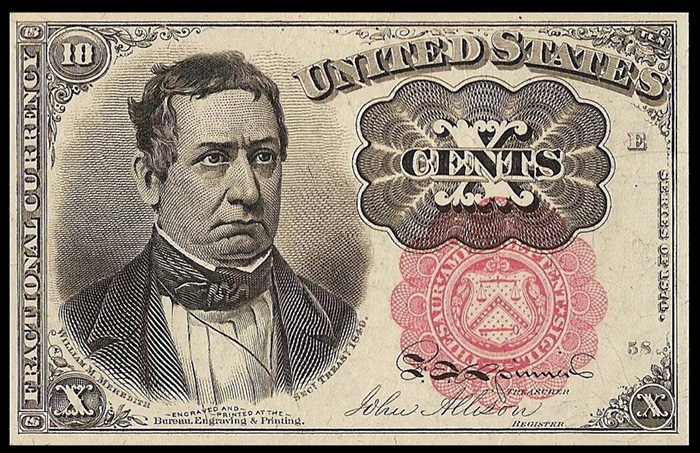
Unaltered 10-cent fractional currency note, issued from February 26, 1874 to February 15, 1876
In 1862, Congress approved, and President Lincoln signed into law, the printing of what was called “fractional currency” notes. The ones you see below were called Fifth Issue 10-cent notes, and featured William M. Meredith, Secretary of the Treasury, during Zachary Taylor’s administration.
The use of this fractional currency was discontinued in 1876, ten years after the end of the Civil War. With coins back in circulation and the nation healing, any of these temporary notes still in circulation became essentially worthless.
So, what were people to do with this paper that had a portrait engraved on the front? In this instance, an unknown artist decided to reconfigure the likeness of the glum-faced Treasury Secretary into various personas of the day. There was a truant officer, a bishop, a coachman, a lawyer, and numerous other characters from the imagination of this artist, one person is even mentioned by name—Ikey Rosenbloom.
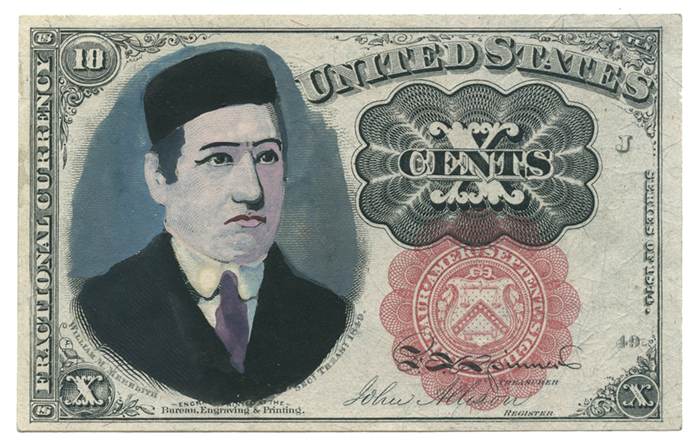 Ikey Rosenbloom
Ikey Rosenbloom I dare say most people today have never heard of or seen a fractional currency note from the last century, much less ones that were transformed by an unknown hand. We are left, over a century later, to wonder about these altered little notes of our rich American history.
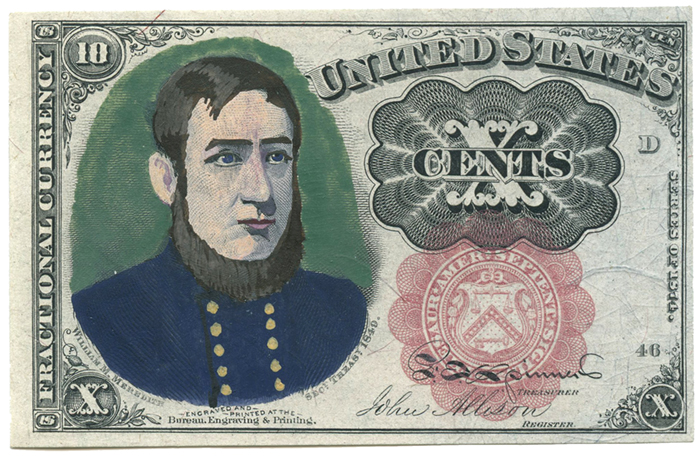
A Union Captain
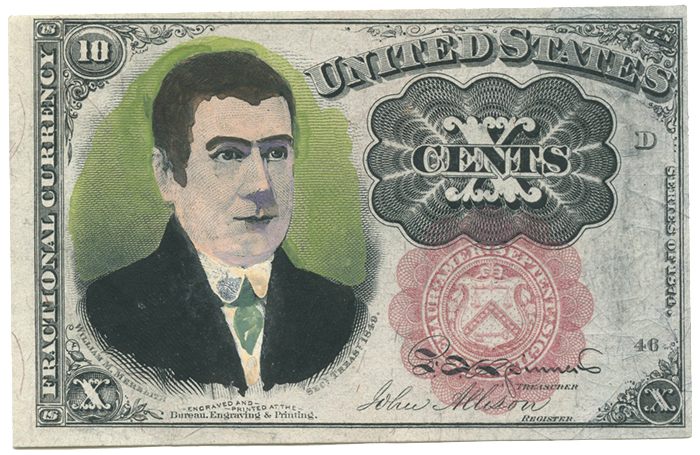
A Lawyer
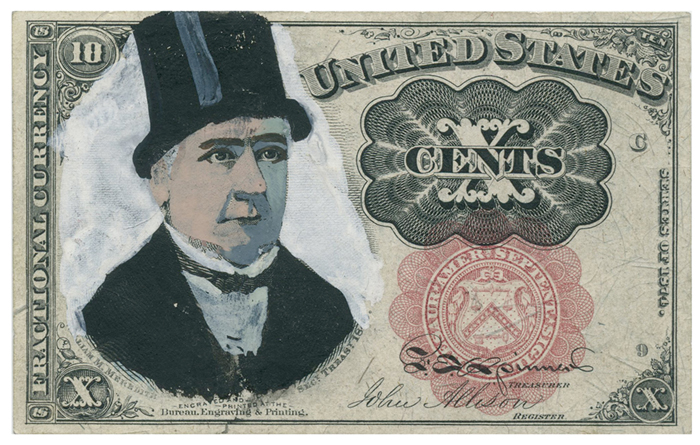
Prince of Wales
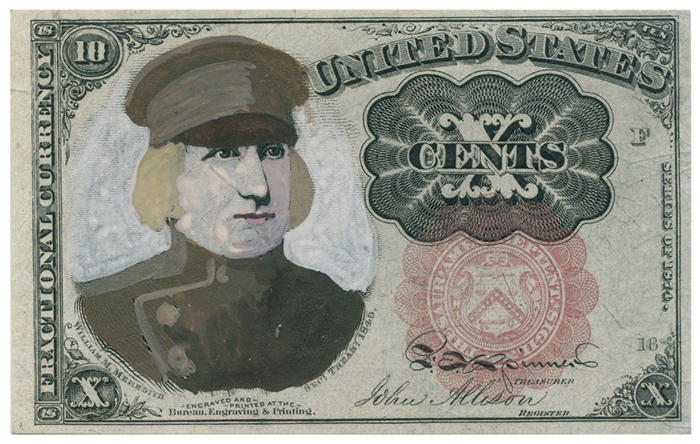
A Hollander
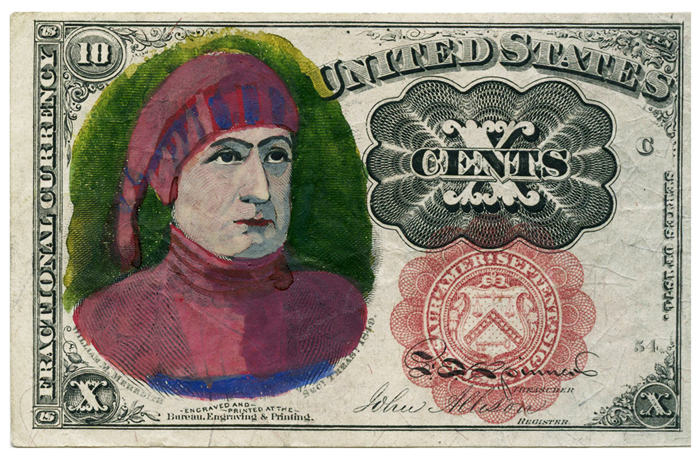
A Tobbaganist
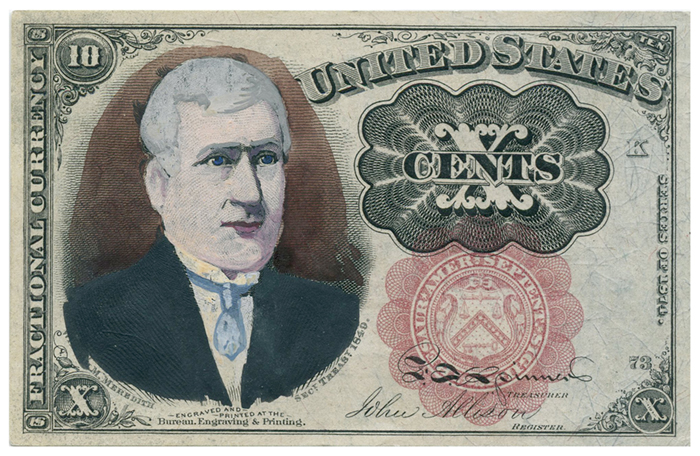
A Bishop
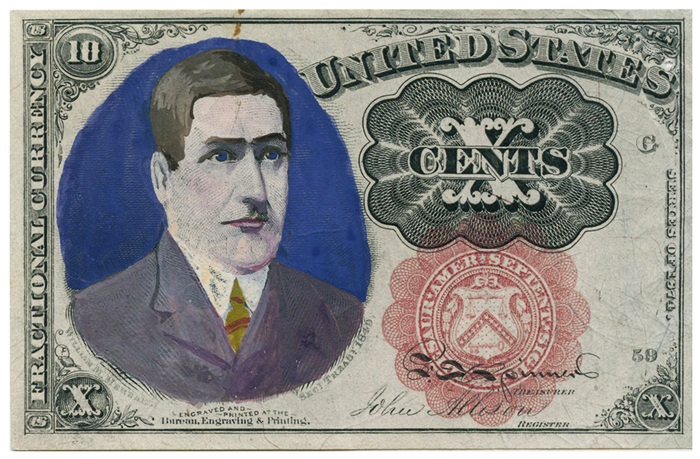
Head Clerk
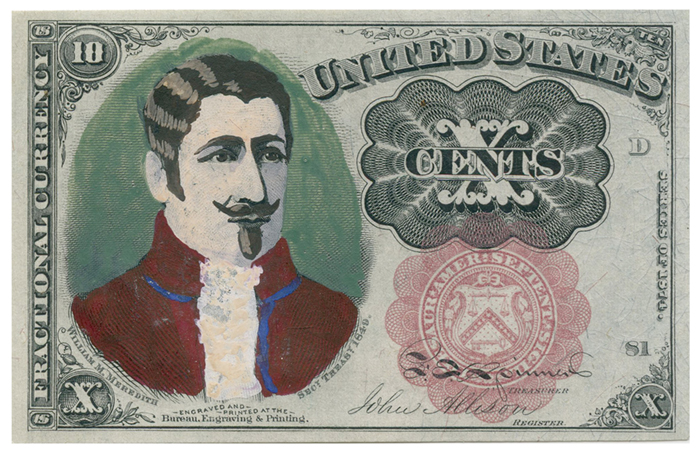
A Duke
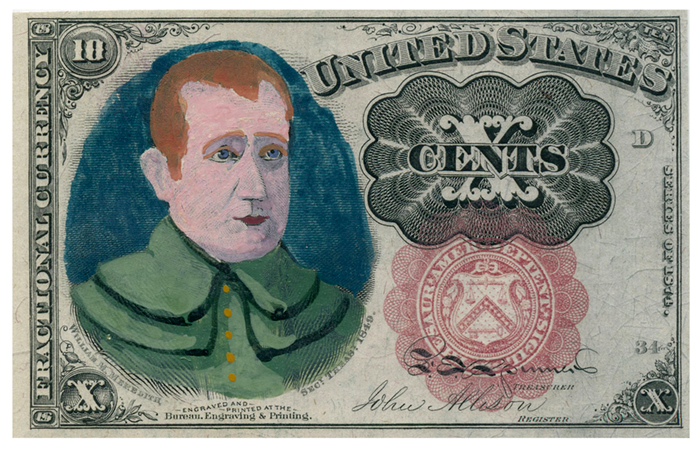
A Coachman
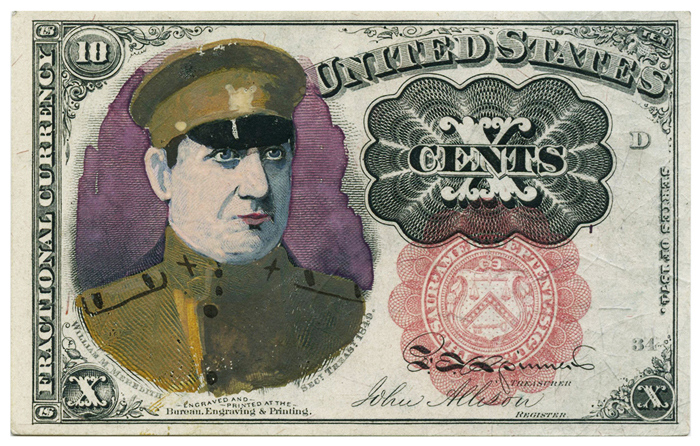
Army Officer
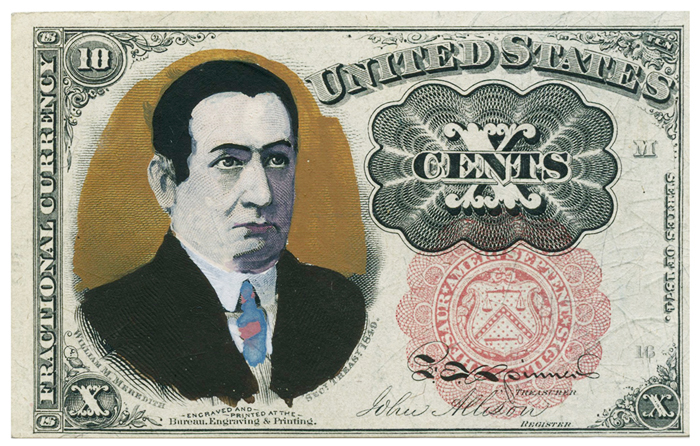
Truant Officer
Images from the collection of John Foster

